“Twenty years ago, no one was at our booth,” recalls Kazuhiro Abe, chief engineer of the 2017 Impreza. He was reminiscing about the launch of the third-generation Legacy at the Chicago Auto Show with a wry smile. He had joined the company in 1990, when business wasn’t going so well. The company didn’t even have the clout to get prime real estate in the convention center. Stuck in a remote corner of McCormick Place, the booth was a ghost town. Finally, a woman approached with her toddler, poised to ask a question. The mood at the booth immediately lifted and Abe got ready to tell her how great the car was.
“Can I change a diaper in your car?” she asked.
Naturally, Abe obliged. But he still talked to her about the Legacy’s features. A spacious cargo area, for example.
A New Record
“We never thought we’d be here,” he chuckles. Here, of course, is a streak of record-breaking sales increases that’s the envy of every carmaker from Auburn Hills to Wolfsburg. They just surpassed their own sales record for the eighth quarter in a row. The 2017 Impreza, whose development Abe headed, has just won the prestigious Japan Car of the Year Award, only the second Subaru wins in the 37 years the prize has been issued.
For decades, Subaru toiled away in relative obscurity, marching to their own drum and making funky, all-wheel-drive billygoats for two completely disparate demographics — uber-granola neo-hippies refusing to give into the SUV craze or vaping tattoo canvases tearing through your neighborhood in a streak of blue. Back when Abe’s Legacy was doubling as a changing room, US sales were just cracking 100,000 units a year.
They stuck it out though, and in 2008, the company decided to do something strange. They began making their cars more amenable to the mainstream buyer, and the wiggly line on their sales charts shot upwards like a startled cat. To the Subaru faithful, this was blasphemy. The Impreza grew as large as the old Legacy, and the Legacy, especially in soon-to-be sold Outback-only format in the US, got even bigger.
In Japan, demand for a return to a wagon sized like the legacy Legacy was so strong that Subaru came out with the Levorg. Americans, however, embraced the new Subes with (wide) open arms. Demand got so strong that Subaru has just finished a $1.3 billion expansion at their Lafayette, Indiana plant (established jointly with Isuzu in 1988) in order to accommodate a near-tripling of sales since 2008. Last year, they moved more than 615,000 cars in the US.
Driving Imprezsions
Subaru recently invited us to the US launch of its Japan Car of the Year winner. Theoretically, that makes it the best new car available in the motherland, beating out rivals like the Audi A4, Toyota Prius, and Volvo XC90.
Right off the bat, though, Subaru alarmed us with the declaration that the Impreza rides on a new global architecture that will underpin all future Subarus.
“All future Subarus?” We asked.
“Yes,” said Subaru’s engineers.
“Even the BRZ?” We pressed, concerned for the continuation of their lightweight sports coupe.
“We are co-developing that with Toyota, so it is a separate project.”
Phew. A lot of companies are moving to modular platforms these days to save money, but the good news is that many of them, including Subaru’s, seem to exhibit no compromises on characteristics like handling. In the old days, a chassis that had to support both a 2-seater sports car and a luxury crossover had to give up a good portion of its sprightliness in the former application. This is not the case for the new generation of platforms like Subaru’s, which are far more flexible and can vary significantly in chassis size while using common core parts.
Subaru provided a variety of trims and body styles, but we chose a Sport trim hatchback. Subaru says its buyers are a weird bunch. Sixty-six percent of them choose the 5-door model over the sedan, the opposite of every other automaker that offers both body styles. We suspect JNCers would fall into that camp as well.
We took our JCOTY to the Laguna Mountains east of San Diego, home of some of southern California’s best — and most deserted — touge roads. Over ribbons of asphalt draped over undulating hills, we discovered that there was no need for concern over the modular platform.
Its steering response was quick and predictable, and it stuck to the blacktop like a flattened opossum. Sport models also come with a torque vectoring system that applies the brakes to inside wheels during hard cornering, countering the understeering tendency of a nose-heavy AWD car. It feels like a different, more sure-footed animal than most of its rivals in the compact class.
The cabin has been engineered to be downright peaceful too. There were long stretches of interstate getting to and from those wonderful mountain passes, but it never felt like a droning slog. Somehow engineers quieted wind and road noise to levels expected from several tiers up.
It wasn’t an issue on our lonesome driving roads, but on the freeway we began to appreciate another hallmark of Subarus — visibility. With ever-thicker pillars in new cars simply seeing others around you can be a problem, but Subaru’s engineers pride themselves on having a strict standard for visibility dating back to Fuji Heavy’s roots as Nakajima Aircraft and their cockpit canopies. It’s an often overlooked characteristic that never appears on the spec sheet, but it’s pretty high on our list of important ones.
Pulling the Trigger
At this point, owners of a 1974 Subaru GL — all three of you out there — might be thinking of picking up an Impreza as a daily driver. Considering that the Impreza starts at less than $19,000 for a base model, you’d be crazy to get a Corolla, which doesn’t even have all-wheel-drive.
We’d choose a Sport model and fork over the extra $3,000, but draw the line before we get to the leather-trimmed Limited, which costs another $2,000 more. The Sport body rolls a lot less in corners and you can still option it with some features like a moonroof without having to spring for the big-buck Limited trim.
But wait. There’s a caveat. At this moment, the only transmission available is a CVT. The 2.0-liter boxer has been tasked to propel 3,082 pounds of AWD Fuji heaviness with 152 horses, and the CVT feel like the weak link in an otherwise fine package. We’d wait for the 5-speed manual, which should hit dealerships in February. As our resident Subarite Ryan Senensky observed, the Impreza Sport — naturally aspirated with a 5-speed, active torque vectoring, and priced well below the WRX — is basically a modern 2.5RS. It is perhaps further evidence that nostalgia for 1990s sport compacts is coming back.
Back in the Day
Speaking of nostalgia, Subaru happened to have a 1993 Impreza L on display at launch event. It was a recent addition to the Subaru Attic and the most Nineties shade of turquoise metallic you could possibly imagine. Other journalists glanced at it with amusement, but we were apparently the only ones who asked if we could drive it.
Our simple question launched a flurry of phone calls, with the Subaru staff discussing whether the new acquisition had been through a thorough safety check to see if, for example, the brakes worked. They were certainly more concerned about the car than us, and in the end decided that we could drive it briefly, as long as we had a company chaperone.
The minute we fired up the 1.8-liter SOHC boxer, our minds were washed over with a flood of with Clinton Era driving memories — the stark gauges, the unadorned dash made from one giant piece of pressed plastic, and nothing but two vents and a trio of round HVAC dials where a touchscreen with five hundred functions would reside today.
The Impreza was introduced in US markets in 1993 as a replacement for the Loyale, and the L was the mid-range model. Subarus weren’t even guaranteed to be AWD yet, and a front-wheel-drive model like this one would’ve started at $11,499. Base models were offered solely with manual gearboxes, while the top-of-the-line LS models were auto-only. L models had either option but the one we drove was an automatic, complete with one of those 1990s gear selectors that resembled an upside-down 1-iron jammed through the floorboard.
With 110-horsepower on tap, it was never fast. Instrumented tests at the time clocked it somewhere in the 12-second range. Americans wouldn’t get the WRX until the turn of the century, but in Japan Subaru was already offering a turbocharged, rally-inspired model with a turbo four spewing an astounding 170 horsepower — better than many V6es at the time.
Even if we had more power we wouldn’t have driven it any differently anyway. It’s not every day you get to steer a museum piece and we did so gingerly, at slow speeds, around the La Jolla waterfront. Still, even in our brief turn we found similarities to the new Impreza, like interior materials that feel more upscale than its competitors’, logically placed switches and buttons, and that Nakajima-level visibility through an expansive greenhouse.
Rising Star
At the time when the 1993 Impreza was still new, Subaru laid off 17 percent of its US staff. Due to a strong yen and expenses like the cash-bleeding SVX the company had burned through $750 million over the previous seven years. Sales were so poor that Subaru was actually considering pulling out of the US market altogether.
By refocusing on what they were good at (an all-AWD lineup) and introducing a couple of well-timed products (the Legacy Outback), Subaru’s fortunes began to change. Abe-san has seen a lot in the 27 years he’s been at the company. He’s had a hand in success stories such as the second- and third-gen Legacys, but also experiments with less than stellar results like the Tribeca and Baja. With all of Subaru’s recent accolades and sales records though, one thing’s for sure these days: No one’s changing a baby in their corner.


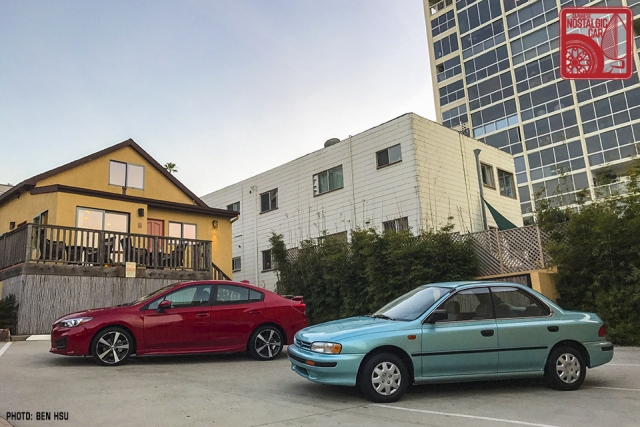

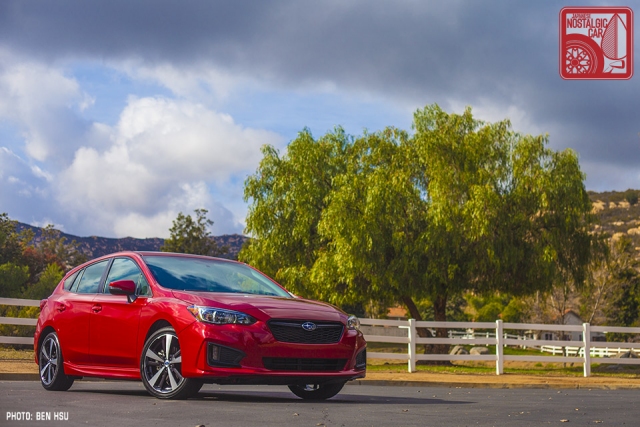
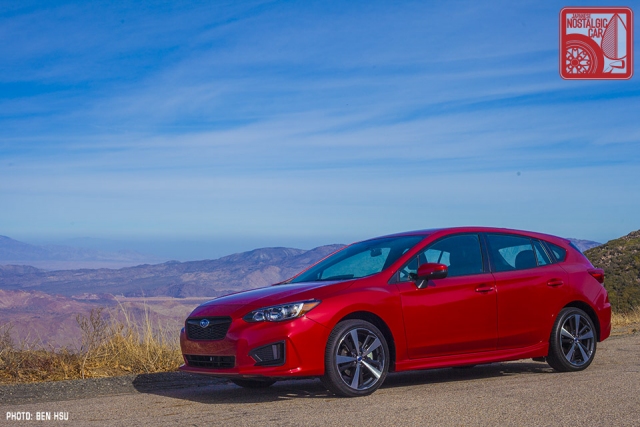


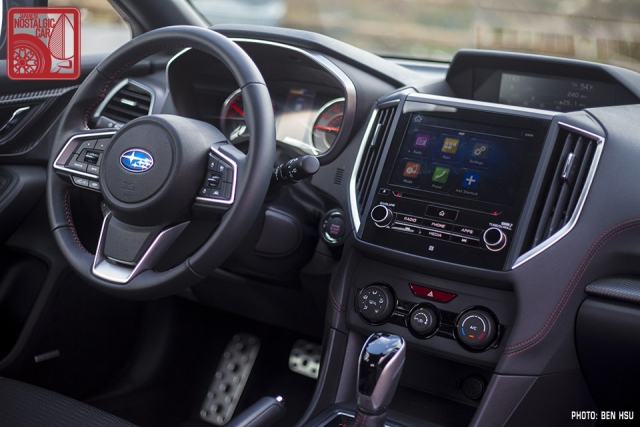
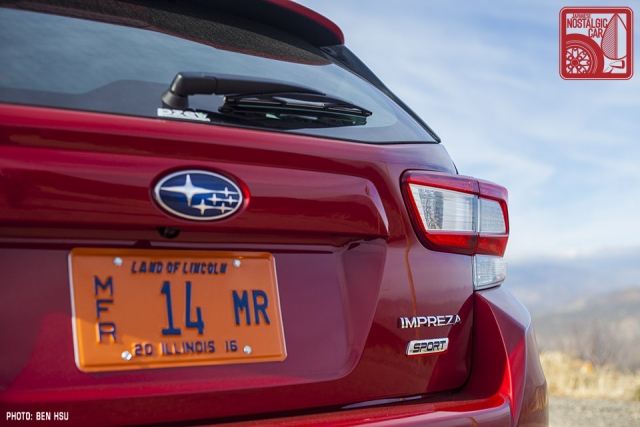
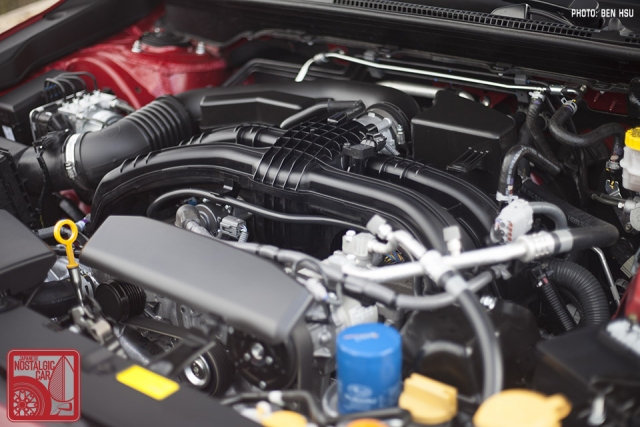
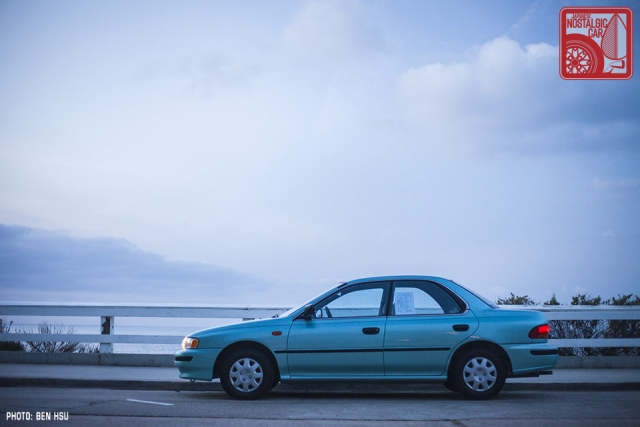
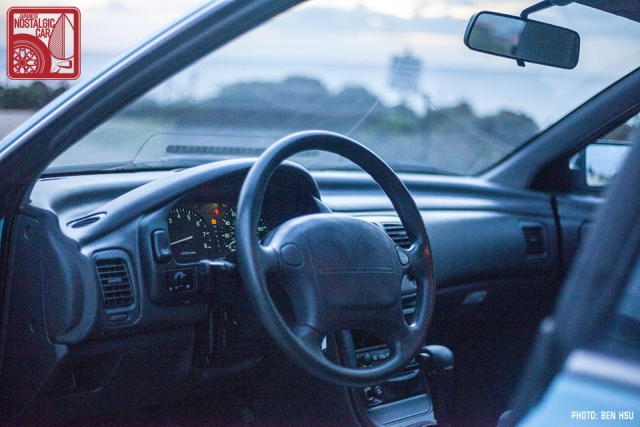
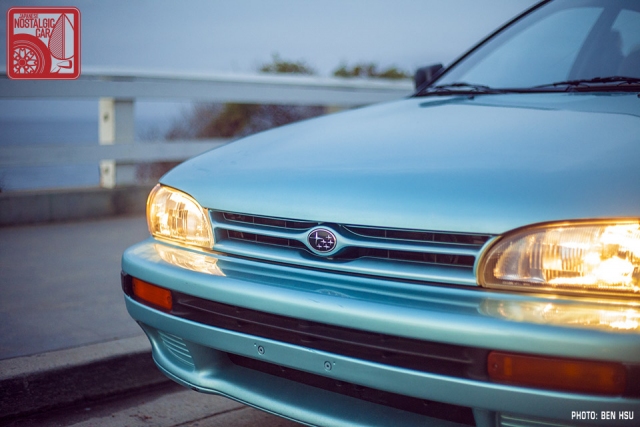
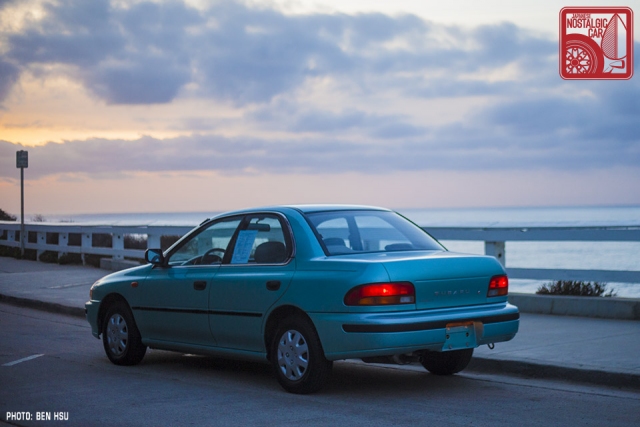




Wait, the question asked doesn’t have an answer. Did the lady get her answer?
““Can I change a diaper in your car?” she asked.
Naturally, Abe obliged. But he still talked to her about the Legacy’s features. A spacious cargo area, for example. “
Thanks Yuri, beat me to it!
Great story. I’m proud of Subaru, but skeptical of their CVTs. My old man wants to replace his Tribeca with the upcoming 2019 Ascent. But I keep telling him, “Remember how you don’t like the Outback loaner you sometimes drive?”
My answer, drive one. Yeah yeah, we’ve all heard about rubber bands CVTs from every driving rag, but if recently drove a CVT Altima for a rental for two weeks and it was… fine. Felt like a regular automatic, got great gas mileage, and has decent shift characteristics. Technology improves, like the article says, it’s not the 90s anymore.
It’s actually nice to see Subaru being successful. See, going mainstream does help, getting rid of the really odd styling and ditching the spare tire in the engine bay too.
I’d say it was monumental decision to bring the WRX more than else that really drove Subaru sales. Okay, the Legacy Outback season, too…
Legacy Outback wagon…
The Legacy Outback Wagon hit showrooms at the height of the SUV craze, but when most SUVs were still body-on-frame trucks. Subaru credits this proto-crossover as the car that saved the company. It’s what people really wanted before the word crossover existed. Back in the 90s, they were calling it a hybrid! 😀 I should’ve included the WRX, though. You’re right about that. That was the car that hooked the enthusiast half of their demographic!
Driven a few recent-model Subarus in the last year or so. WRX, Levorg, Forester. Unfortunately the WRX is the disappointment of the bunch, mainly because the kind of cars it now competes against are so complete in virtually every way – the game has moved on.
But I was actually surprisingly fond of the Levorg and Forester. Both rode well (the WRX does not!), both felt well built, and the Forester in particular was quite good fun to drive. It was the turbocharged XT, and had a CVT, but the unlikeliness of driving something so tall was quite entertaining, and the turbo/CVT combination felt pretty responsive. Fantastic visibility too – probably better than virtually any other modern car I’ve driven recently.
Driven a BRZ too, of course. Which is great, but doesn’t really “feel” like a Subaru, despite the flat-four.
I’m so jealous of your Levorg-having market!
Speaking as an owner of a 73′ GL (maybe 1 of 3 also? LOL), I unfortunately would not be considering anything with a CVT. When looking for a commuter, I did drive a crosstrek and I will agree CVT’s have come a long way, but they, to me, are still kind of annoying. I ended up with a Mazda 3 hatch (S/GT) for a very good deal thanks to Mazda’s generous offer to Touge participants. I am however keeping a eye open for a clean SVX……………..
Glad you were able to take advantage of that program!
I was considering a base model 2017 WRX and talked to two dealers in the Chicago area. They told me they will take $100 off sticker price and one even told me these are “rare” cars and hard to get. Rare? Subaru? Really? They told me yes – I’ll head over to Honda and buy another manual transmission Accord instead.
Rare?
“you’d be crazy to get a Corolla, which doesn’t even have all-wheel-drive.”
Does the Subaru get 40 mpg? It’s pathetic that a Corolla only gets about 40mpg. You’d think by now that all the B class cars would easily get 50 mpg. My 1986 Isuzu I-Mark rarely got under 40 mpg.
“The 2.0-liter boxer has been tasked to propel 3,082 pounds of AWD Fuji heaviness with 152 horses”
So it’s slower than my 1992 240SX? Will it get 30-35 mpg? Or is this another example of 20-30 years and we still don’t get cars that use less fuel?
“the unadorned dash made from one giant piece of pressed plastic, and nothing but two vents and a trio of round HVAC dials where a touchscreen with five hundred functions would reside today.”
Cars were much nicer then. You had what was necessary without all this infotainment crap. You had much less crap to break, resulting in costly repair bills. No wonder I still drive a B14 Sentra.
“and that Nakajima-level visibility through an expansive greenhouse.”
It doesn’t appear that visibility is any better than my B14. Actually, the cars look very similar.
The American market has made the Japanese cars sold here a disgrace. It’s sad that in the 80s and 90s there were plenty of Japanese cars that interested me. In the past 20 years there’s very few I find interesting. I can’t really blame the Japanese auto makers though. They’re just pandering to an idiot market.
If I lived in an area with lots of snow, I would have considered Subarus in the past. There’s little snow in my area so the added complexity and weight of 4wd is a liability to me, not an asset.
Thanks for the article. The 93 Impreza looks nice. If it gets 40+ mpg, it would be a car I might buy.
I was talking in another forum about car options – the Corolla may not necessarily be the best car in its’ class, but it has one of the best-value options in the industry!
I’m speaking of the $250 upgrade from a Corolla L to a Corolla iM. For that you get;
– A hatch (with rear wiper)
– 6MT instead of CVT
– Alloy wheels
– Body kit
– Additional (non-grayscale!) color choices
Altogether, a considerably more useful and less dreary machine for not much extra outlay.